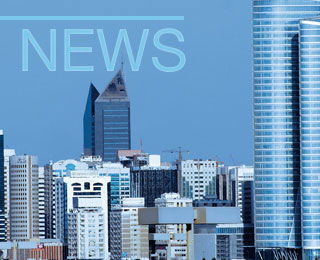First half turnover at Holcim emerged at Sw.Fr.6,317m (€4,075m), an increase of 8.8%, or 9.8% if measured in local currencies. The operating profit at the EBITDA level rose by 12.6% to Sw.Fr.1,720m (€1,110m), which represents a 14.8% advance in local currency terms. At the trading level, the profit advanced by 21.2% to Sw.Fr.1,071m (€691m). Helped in part by the rights issue to finance buying out most of the minority in the Mexican subsidiary Apasco, the gearing level fell from 100.2% at the end of June last year to 75.9% this time, with the actual debt level dropping by 16.7% to Sw.Fr.8,061m (€5,201m). Shipments of cement and clinker during the period were 10.0% higher at 49.3m tonnes, while deliveries of ready-mixed concrete rose by 9.5% to 13.8m mm3 and the aggregates tonnage increased by 13.3% to 48.6m tonnes.
In Europe, turnover rose by 10.9% to Sw.Fr.2,342m (€1,511m), which represents an underlying improvement of 6.2% before exchange rates and changes to the sphere of consolidation are taken into account. The trading profit rose by 31.6% to Sw.Fr.350m (€226m), but only 3.8% was attributed to changes in structure, which notably included the initial consolidation of Alpha Cement in Russia, with an annual output in the region of 3m tonnes and a theoretical capacity of 4.3m tonnes. Cement volumes were ahead particularly in Spain, Romania and Bulgaria but also in France/Belgium, Italy and, thanks to infrastructure projects, in Switzerland. No recovery in volumes were seen in northern Germany, but prices have now risen by around €9 per tonne from the nadir seen last November and Holcim (Deutschland) is expecting a further improvement of at least €5 per tonne over the next five months.
The Latin American increase in turnover of 2.8% to Sw.Fr.1,420m (€916m) understates the underlying growth rate of 9.4%, almost entirely because of currency weakness. Weaker currencies also led to a 3.4% decline in the trading profit to Sw.Fr.372m (€240m), but Latin America remains the largest profit earner for the group, although the lead over Europe narrowed considerably. Higher costs were also a problem, particularly in countries where gas is used for electricity generation. Cement deliveries increased across the region, with the exception of Brazil and Chile on the back of a weak economy and the completion of work on a major dam respectively. Minetti recorded a particularly strong increase in volumes as the Argentinean market continued to recover from very low levels of activity.
North America showed an increase in turnover of 8.5% to Sw.Fr.1,088m (€702m) as currency movements reduced the underlying growth rate of 11.4%. The trading profit recovered strongly thanks to better operating efficiency, higher volumes and prices, and, in spite of the weaker currency, jumped 111.1% to Sw.Fr.95m (€61m). Good demand and local shortages led to a recovery in cement prices in the United States, where two price increases have now been introduced, the April move varying between US$2 and US$6 per short ton according to the area, followed by a more or less universal US$5 increase in August. In spite of better plant availability, there was an increase in imports. The Canadian operations performed well in a good market. All necessary approvals have now been secured for the new cement plant to be built in Missouri and in August, Holcim bought out its minority partners in the Midlothian cement works in Texas.
The Asia Pacific area registered a growth rate of 12.3% in turnover to Sw.Fr.947m, which represents an underlying growth rate of 15.5%, while the trading profit improved by 34.7% to Sw.Fr.120m (€77m). Cement shipments increased in Australia, New Zealand, Azerbaijan, Vietnam, Sri Lanka and Malaysia as well as, to a modest degree, in the Philippines, while in Thailand and Indonesia increased domestic deliveries were offset by reduced cement exports. The strongest profit improvements were seen in Australia, New Zealand, Thailand and the Philippines, while the level of profitability was slightly lower in Vietnam and in Indonesia. During the period, Holcim took full control of National Cement Industries in Singapore and the new grinding station at Thi Val in southern Vietnam is about to be commissioned.
The African and Middle East region showed the strongest growth with a 28.3% advance to Sw.Fr.725m (€468m). That still represents an underlying growth rate of 25.0% and the strongest advances in turnover were seen in Egypt and the Lebanon, with Morocco and South Africa also registering good volume improvements. In Egypt, prices improved on stable volumes, while the Lebanese advance was primarily on the back of higher volumes that were boosted by exports. The additional capacity provided by the commissioning of the third kiln at Dudfield enabled the group to benefit from higher cement demand in South Africa. In terms of trading profit, there was a 25.0% increase to Sw.Fr.163m (€105m).
